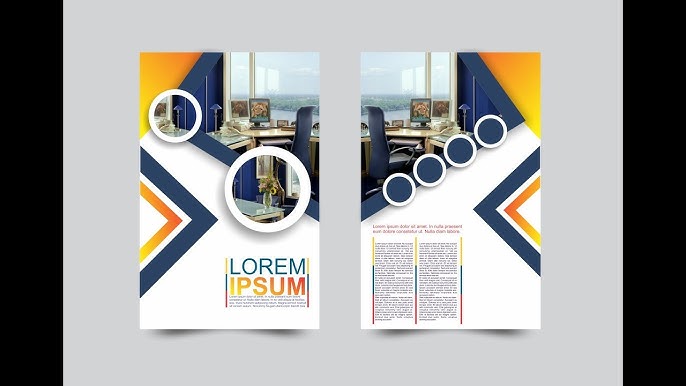Mastering Design Efficiency: A Comprehensive Guide to Templates in CorelDRAW

Introduction:
In the dynamic world of graphic design, efficiency and consistency are paramount. CorelDRAW, a powerhouse graphic design software, offers a robust template system that empowers designers to streamline their workflow, maintain brand consistency, and expedite the creation of professional designs. In this comprehensive guide, we embark on an exploration of templates in CorelDRAW, unraveling their features, applications, and the myriad ways in which they revolutionize the design process.
Understanding Templates in CorelDRAW:
- Defining Templates: A template in CorelDRAW is a pre-designed file that serves as a starting point for new designs. It includes predefined elements such as layouts, styles, and objects, providing a foundation upon which designers can build their projects.
- Template Types: CorelDRAW supports various types of templates, catering to different design needs. Blank templates offer a clean slate, while predefined templates encompass layouts for specific projects like brochures, business cards, or posters. Additionally, users can create custom templates tailored to their unique requirements.
Creating and Using Templates:
- Creating a Template: Designers can craft templates by creating a design, adjusting settings, and saving the file as a template (.CDT). Custom templates allow for the inclusion of branded elements, grid structures, color schemes, and other design components that define a consistent visual identity.
- Accessing Built-in Templates: CorelDRAW comes with a library of built-in templates that cover a range of design scenarios. Users can access these templates directly from the welcome screen, providing a quick starting point for various projects.
Efficient Design Start:
- Streamlining Workflow: Templates serve as a time-saving tool by eliminating the need to recreate standard design elements for every project. Designers can start with a template that aligns with their project requirements, allowing them to focus on customization and creativity rather than repetitive tasks.
- Consistency Across Projects: Maintaining brand consistency is simplified through templates. Designers can integrate brand colors, logos, and other visual elements into templates, ensuring that each project aligns with the established brand identity.
Layout and Composition:
- Grids and Guides in Templates: Templates in CorelDRAW support the inclusion of grids and guidelines, providing a structured framework for design composition. This aids in maintaining alignment and precision across various design elements.
- Master Pages: CorelDRAW allows designers to designate master pages within templates. Master pages contain elements that appear on every page, streamlining the addition of headers, footers, or other consistent elements across the design.
Dynamic Template Editing:
- Editable Regions: Templates can feature editable regions, allowing designers to modify specific areas while preserving the overall structure. This flexibility ensures that templates remain versatile and adaptable to diverse design requirements.
- Template Modification and Update: As design needs evolve, designers can update existing templates. CorelDRAW provides the option to modify templates directly, ensuring that changes are reflected in all new projects based on that template.
Advanced Template Features:
- Symbol Libraries: Templates can incorporate symbol libraries, facilitating the reuse of complex graphic elements. Symbols stored in libraries remain consistent across designs, enabling efficient updates and edits.
- Custom Color Palettes: Designers can create and include custom color palettes within templates. This ensures that the color scheme adheres to brand guidelines, promoting visual coherence across projects.
Collaboration and Sharing:
- Sharing Templates Across Teams: Templates streamline collaboration within design teams. By sharing templates, team members can adhere to common design standards and contribute to projects with a shared visual language.
- Version Control: When collaborating on projects based on templates, version control becomes crucial. CorelDRAW’s template system allows for the creation and tracking of versions, ensuring that designers work with the latest iteration.
Best Practices and Tips:
- Organizing Template Libraries: Designers can enhance efficiency by organizing template libraries based on project types, clients, or design styles. This aids in quick retrieval and ensures that the most relevant templates are readily available.
- Regular Template Review: To adapt to evolving design trends and branding changes, designers should conduct regular reviews of existing templates. Updating templates keeps them relevant and aligns them with the latest design standards.
Troubleshooting Template Issues:
- Template Compatibility: Designers should be mindful of template compatibility across different versions of CorelDRAW. Ensuring that templates are created and saved in compatible formats avoids potential issues when opening them in different software versions.
- Corrupted Templates: Regular backups and maintaining a clean template library help prevent issues related to corrupted templates. If a template becomes corrupted, having a backup ensures that the design process is minimally disrupted.
Conclusion:
Templates in CorelDRAW emerge as indispensable tools for designers seeking efficiency, consistency, and creativity in their workflow. From streamlining the design start to enforcing brand identity and fostering collaboration, templates elevate the design process to new heights. By understanding the intricacies of template creation, utilization, and advanced features, designers can harness the full potential of CorelDRAW’s template system. In essence, templates become the architect’s blueprint, providing a structured foundation for design brilliance and innovation. As designers continue to explore the vast landscape of possibilities within CorelDRAW’s template ecosystem, they pave the way for a future where creativity and efficiency coalesce seamlessly.







